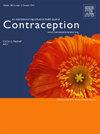表征美国的堕胎错误信息和虚假信息
IF 2.3
2区 医学
Q1 OBSTETRICS & GYNECOLOGY
引用次数: 0
摘要
有限的堕胎教育,数十年的反堕胎宣传,以及普遍存在的堕胎污名,助长了堕胎错误信息和虚假信息的猖獗扩散,研究表明,这是导致美国堕胎准入受限的一个因素。尽管如此,关于堕胎的错误和虚假信息的证据仍然相对较少,并且在各个学科中都是零散的。这一范围审查旨在综合现有文献,并确定美国这种错误信息和虚假信息的流行类型和媒介。方法检索PubMed、Embase、CINAHL和Web of Science数据库,检索2000年至2025年间发表的同行评议研究,评估美国堕胎知识或堕胎信息源的质量。三名独立审稿人使用covid - ence软件筛选957项结果的合格性,并从33项纳入的研究中提取数据。我们按主题合成结果。结果现有研究主要包括评估个人对堕胎神话的认可的调查(n=16)和文献或媒体的定性分析(n=15)。我们确定了流产错误和虚假信息的三种常见类型:1)对流产安全结果的扭曲,2)对程序流产和药物流产方法的错误描述,以及3)对胎儿发育标志物的错误描述。研究记录了通过反堕胎危机怀孕中心和诊所抗议者,在线和传统媒体以及州和联邦一级的官方政策文件传播这种错误和虚假信息。这些发现强调了美国堕胎错误信息和虚假信息的扩张性。通过描述其普遍形式和共同传播渠道,本研究确定了制定和评估基于证据的干预措施的关键目标,以有效地破坏堕胎错误和虚假信息,并促进准确的健康信息。本文章由计算机程序翻译,如有差异,请以英文原文为准。
CHARACTERIZING ABORTION MISINFORMATION AND DISINFORMATION IN THE US
Objectives
Limited education on abortion, decades of anti-abortion propaganda, and pervasive abortion stigma have fostered the rampant proliferation of abortion misinformation and disinformation, which research suggests is a contributing factor to the restrictive abortion access landscape in the US. Despite this, evidence on abortion mis- and disinformation remains relatively scarce and fragmented across disciplines. This scoping review aimed to synthesize the extant literature and identify prevalent typologies and mediums of this misinformation and disinformation in the US.
Methods
We searched PubMed, Embase, CINAHL, and Web of Science databases for peer-reviewed research published between 2000 and 2025 that assessed abortion knowledge or the quality of abortion information sources in the US. Three independent reviewers utilized Covidence software to screen 957 results for eligibility and extract data from 33 included studies. We thematically synthesized results.
Results
Existing research consisted primarily of surveys assessing individuals’ endorsement of abortion myths (n=16) and qualitative analyses of documents or media (n=15). We identified three common typologies of abortion mis- and disinformation: 1) distortions of abortion safety outcomes, 2) mischaracterizations of procedural and medication abortion methods, and 3) misrepresentations of fetal development markers. Studies documented the dissemination of this mis- and disinformation through anti-abortion crisis pregnancy centers and clinic protesters, online and traditional media, and official policy documents at state and federal levels.
Conclusions
These findings underscore the expansive nature of abortion misinformation and disinformation in the US. By characterizing its pervasive forms and common dissemination channels, this research pinpoints crucial targets for developing and evaluating evidence-based interventions to effectively disrupt abortion mis- and disinformation and promote accurate health information.
求助全文
通过发布文献求助,成功后即可免费获取论文全文。
去求助
来源期刊

Contraception
医学-妇产科学
CiteScore
4.70
自引率
17.20%
发文量
211
审稿时长
69 days
期刊介绍:
Contraception has an open access mirror journal Contraception: X, sharing the same aims and scope, editorial team, submission system and rigorous peer review.
The journal Contraception wishes to advance reproductive health through the rapid publication of the best and most interesting new scholarship regarding contraception and related fields such as abortion. The journal welcomes manuscripts from investigators working in the laboratory, clinical and social sciences, as well as public health and health professions education.
 求助内容:
求助内容: 应助结果提醒方式:
应助结果提醒方式:


